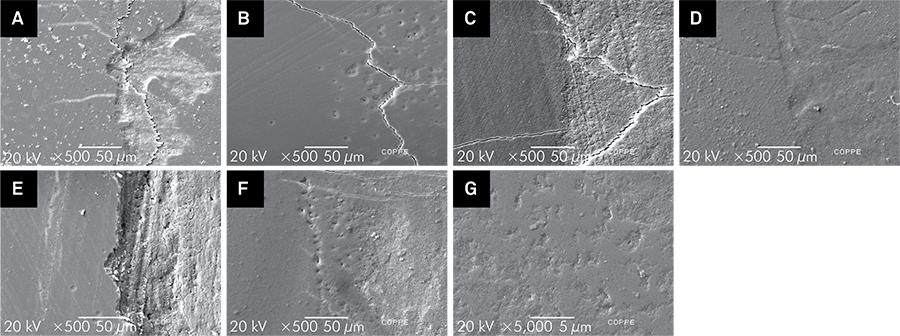Abstract
The purpose of the present study was to evaluate the effect of common pediatric liquid medicines on surface roughness and tooth structure loss and to evaluate the pH values of these medicines at room and cold temperatures in vitro. Eighty-four bovine enamel blocks were divided into seven groups (n = 12): G1-Alivium®, G2-Novalgina®, G3-Betamox®, G4-Clavulin®, G5-Claritin®, G6-Polaramine® and G7-Milli-Q water (negative control). The pH was determined and the samples were immersed in each treatment 3x/day for 5 min. 3D non-contact profilometry was used to determine surface roughness (linear Ra, volumetric Sa) and the Gap formed between treated and control areas in each block. Scanning electron microscopy (SEM) and energy dispersive spectrometry (EDS) were also performed. The majority of liquid medicines had pH ≤ 5.50. G1, G4, and G5 showed alterations in Ra when compared with G7 (p < 0.05). According to Sa and Gap results, only G5 was different from G7 (p < 0.05). Alteration in surface was more evident in G5 SEM images. EDS revealed high concentrations of carbon, oxygen, phosphorus, and calcium in all tested groups. Despite the low pH values of all evaluated medicines, only Alivium®, Clavulin®, and Claritin® increased linear surface roughness, and only Claritin® demonstrated the in vitro capacity to produce significant tooth structure loss.
Dental Enamel; Administration, Oral; Pharmaceutical Preparations; Acidity; Topography


